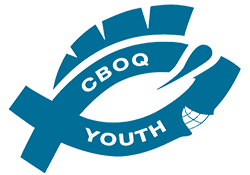This pandemic has highlighted the discord that often exists for middle school students (around ages 11-13). There’s a pull between their developmental stage and what’s accessible to them.
On the one hand, developmentally, they are likely in the throws of puberty. They can be at different stages but for the most part they’re all in the midst of hormonal chaos. It’s been documented that the onset of puberty starts earlier than in previous generations, in some cases as early as age 8 especially in females.
So when ministering to middle schoolers, we must consider their physical, mental, psychological and spiritual changes differently than we would for younger children. Some have argue that topics that have typically been part of youth ministry curricula (e.g. relationships, sexuality, etc.) should be addressed in earlier grades (like grade 4-5). You can, of course, teach the exact same curricula, but consider introducing the topics to younger kids.) By age 11, many young people are starting to feel the pull towards adolescent independence. They wanted to be treated like teenagers.
On the other hand, kids of this age face all kinds of restrictions as to the kinds of engagements they’re allowed to pursue, including online. For instance, many social media platforms require the user to be at least 13 years old (although many start accounts before then, sometimes with the blessing of the parents). Their accessibility to devices and platforms is typically inhibited—they’re not as available to this age group compared to older teens. A youth leader can DM a 14–year–old, who likely has their own mobile device with a social media account. But in many cases, that youth leader will either need to go through the parents or other channels to connect with a 11–year–old.
Ministering to and with middle school students requires a fine balance. On one hand, they want to grow up with a wider range of freedoms. On the other hand, they’re more restricted in what they can do, particularly with what they can do independently.
So how do you navigate this? Some considerations:
- Understand the needs of the individual. Two 11–year–olds in the same group will likely have completely different needs. Understand them individually and the supports that make sense for each one.
- Work in partnership with parents. Understand what their parameters are for their kids and what supports they need.
- You may need to be an advocate for some middle schoolers without ever overriding the parents’ responsibility. At the same time, you may recognize situations or developments the parents aren’t noticing. If you feel strongly that the youth needs help navigating things with the parents, be that mature voice that advocates with them.
- Use whatever channels are available to connect with middle schoolers. It could be online via Zoom. It could be through phone calls. Maybe you need physically distant front door conversations or letters sent by mail (or a combination of many channels).
Ministering with and to middle school students may take some more adaptations and customizations than working with younger or older kids. But especially because they’re in the middle of the chaos of early adolescence, now is an excellent time to help them see the person and message of Jesus, who loves them so.



Leave A Comment